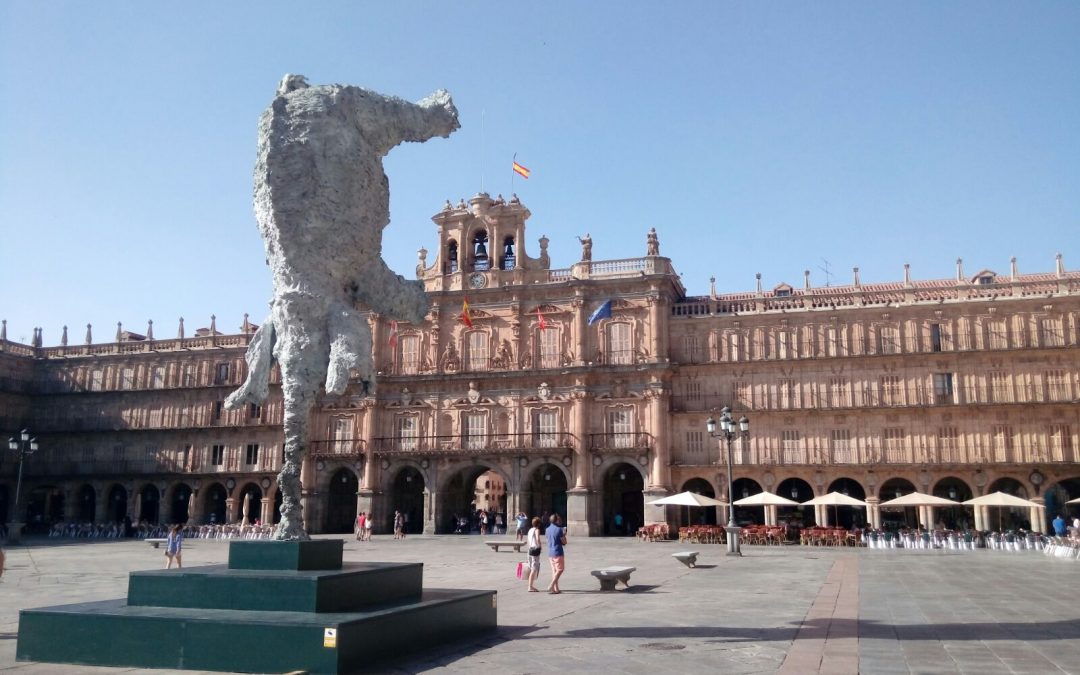The image above was taken last summer and it belongs to the “Plaza Mayor” in Salamanca, with an elephant sculpture by Miquel Barceló, one of the best still alive contemporary artists in Spain. It is a strong and interesting image that talks about the mixing of the traditional style of a intellectual city as it is Salamanca, and the breaking, beautiful, unique and meaningful works by Barceló.
Traditional onsite orientation week in Spain for Study Abroad students usually include a tour of the Prado Museum to visit the “main” authors: El Greco, Goya and Velázquez. Students may also visit the Guernica, by Picasso, at Museo Reina Sofía. Some programs also include a tour of the Royal Palace, Toledo, El Escorial, The Almudena Cathedral…
When students arrive at their program cities, they will surely visit some of the most important and best known works of Art: the Picasso Museum and Gaudi works in Barcelona, Gugghenheim Museum in Bilbao, Alhambra in Granada, Dali Museum in Figueres, “Las conchas” house and Casa Lis in Salamanca, the Cathedral, Alcázar and Italica in Sevilla, the Cathedral in Cádiz, Central Market, Lonja de la Seda in Valencia….and a long etcetera. All of these are, of course, a must, that students need to know and learn about.
But there is so much more to visit and admire in Spain. Spanish Art is not only the Barroque churches, Picasso, Dali and Gothic cathedrals. There are amazing works of architecture, painting, sculpture, dance, music and theatre that students don’t usually get to know.
Programs still need to face the challenge of teaching students about contemporary Spanish Art, about ways of local popular culture and try to help them learn by themselves. We need to find the way to make Art in Spain be part of our curriculum and courses syllabi, including concerts, plays, movies, little exhibitions and any other way of artistic expression. Because Art is an essential part of any culture. No one can learn about a current 21st C. foreign identity without learning about its multiple artistic identities and we, intercultural educators, need to make a bigger effort on that direction.
|

